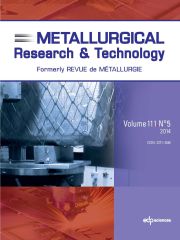Article contents
Effect of scan rates and imposed potentials on the formationand growth of oxide film on Ti6Al4V alloy surface in 3% NaCl
Published online by Cambridge University Press: 23 September 2011
Abstract
In the present study, the formation and growth of an oxide film on a titanium alloyTi6Al4V surface immersed in 3% NaCl solution using anodisation at various imposedpotentials was investigated by two electrochemical techniques, cyclic polarisation andimpedance measurements. In the cyclic polarisation studies at different scan rates, theobtained curves show a large range of passivation, due to the formation of a protectiveoxide film, generally TiO2. In addition, the negative hysteresis that appearedduring the cyclic polarisation with the shift of the corrosion potential in the more nobledirection (approximately +260 mV) may be explained by a reduction of the corrosionproducts. It was found that the lower the scan rates the lower the passivation current,and the scan rates did not have a significant effect on the potential or current ofcorrosion. The impedance measurements (Nyquist and Bode plots) at various imposedpotentials show that Ti6Al4V has a capacitive behaviour in the passive field, due to theformation and growth of the oxide film.
Keywords
- Type
- Research Article
- Information
- Copyright
- © EDP Sciences, 2011
References
- 4
- Cited by


